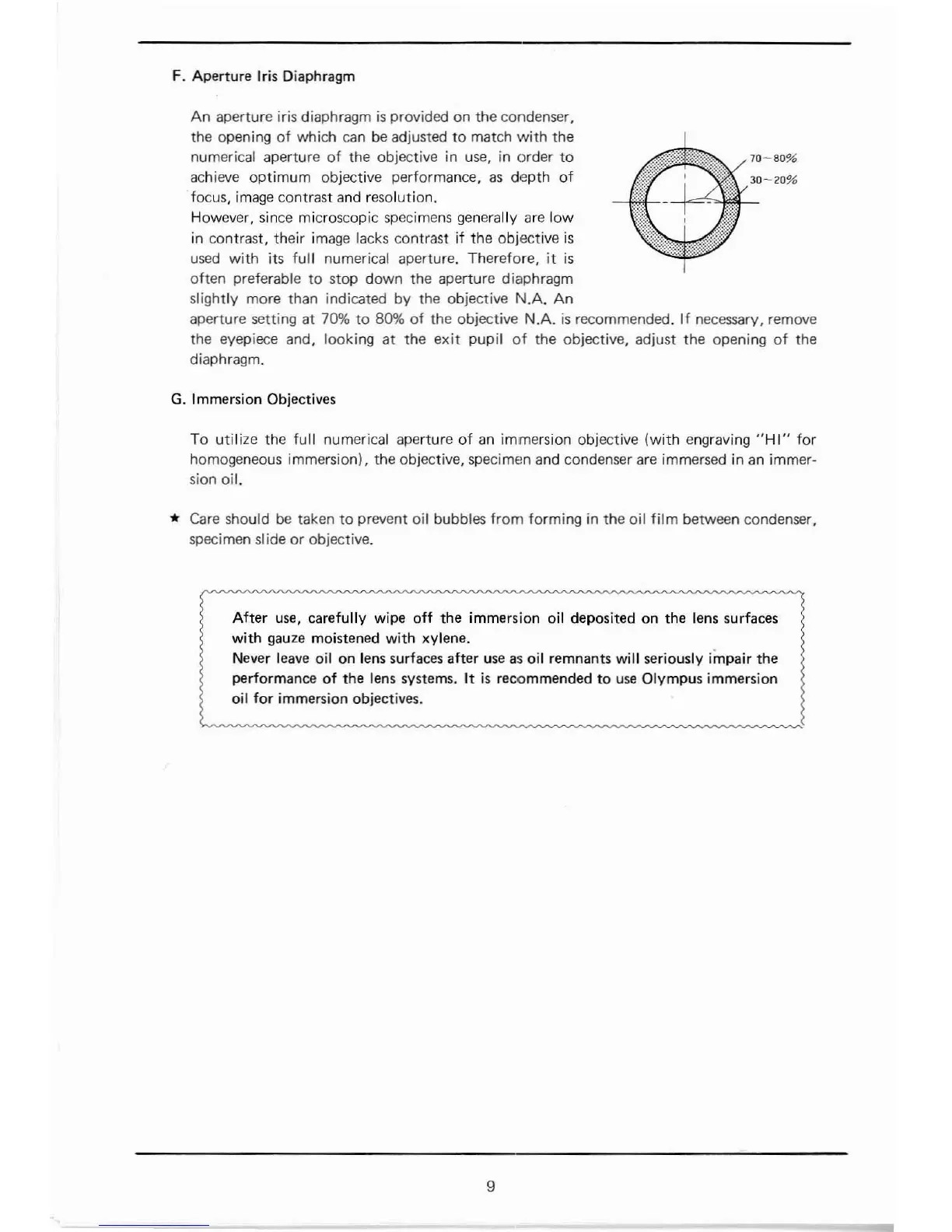F. Aperture Iris Diaphragm
An
aperture iris diaphragm
is
provided
on
the condenser,
the opening
of
which
can
be
adjusted
to
match
with
the
numerical aperture
of
the objective in use, in order
to
70-80%
achieve
optimum
objective performance,
as
depth
of
focus, image contrast and resolution.
However, since microscopic specimens generally are
low
in contrast, their image lacks contrast
jf
the objective
is
used
with
its
full
numerical aperture. Therefore,
it
is
often
preferable
to
stop
down
the aperture diaphragm
slightly more than indicated by the objective N.A. An
aperture setting at 70%
to
80%
of
the objective N.A.
is
recommended.
If
necessary, remove
the eyepiece and, looking at the
exit
pupil
of
the objective, adjust
the
opening
of
the
diaphragm.
G.
Immersion Objectives
To
utilize
the
full
numerical aperture
of
an
immersion objective
(with
engraving
"HI"
for
homogeneous
immersion). the objective, specimen and condenser are immersed
in
an immer-
sion oil.
*
Care
should
be
taken
to
prevent oil bubbles
from
forming
in the oil
film
between condenser,
specimen
sl
ide
or
objective.
After
use,
carefully wipe
off
the immersion oil deposited on the lens surfaces
with
gauze moistened
with
xylene.
Never
leave
oil on lens surfaces after
use
as
oil
remnants
will
seriously
impair
the
performance
of
the lens systems.
It
is
recommended
to
use
Olympus immersion
oil
for
immersion objectives.
9

